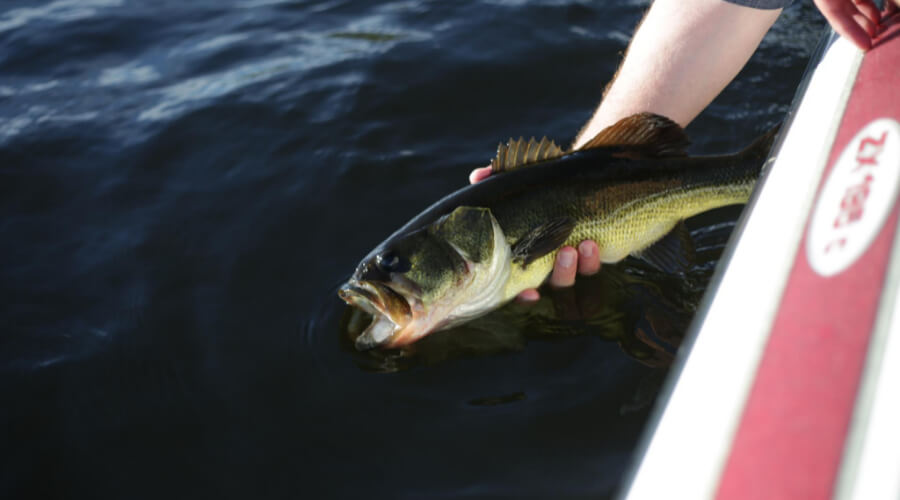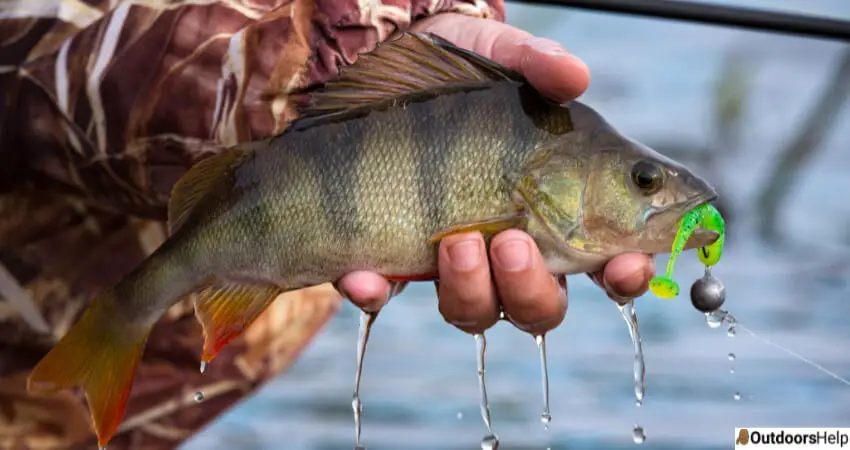Striped bass, also known as rockfish or striper, is one of the most preferred fish in North America. It is a fast-growing, delicious, and hard-fighting fish that can be a great addition to your pond. Are you considering adding striped bass to your pond? If yes, then you’ve come to the right place. In this article, we take you through everything you need to know about striped bass and their adaptations that allow them to survive in ponds. Please stick through to the end.
Yes, striped bass can live in ponds since they don’t need a food chain like largemouth bass. Stripers can survive on pelleted fish food, but to make them grow rapidly, you need to feed them 45% protein feed.
Striped bass is fast growers with the ability to reach 12 inches in their first year of life. They can live for 5 to 7 years and achieve weights of up to 6 pounds in three years. Striped bass is a great addition to a pond since they are delicious and a great size for eating. Fly fishers who enjoy challenging fish should also consider adding striped bass to their pond. To survive in a pond, all you need is a healthy habitat or nursery since their health is greatly dependant on the pond’s condition, forage fish to act like prey, and freshwater for spawning. After harvesting them, it is advisable to restock them since they may not reproduce. Their population tends to remain around target levels with little fluctuations year in year out. Knowing the type of fish striped bass is, you are better positioned to decide whether you want them in your pond. Let’s have a look at some of their adaptations to help you know how you need to set up your pond.
Adaptations Of Striped Bass To Their Environment:

If you plan on adding striped bass to stock or restocking your pond, be sure that you will have a fish that will quickly grow to a catchable size. Adding striped bass is a great way to supplement additional sport fish without disrupting the food chain. They are such an excellent tool for keeping populations in balance without the constant need to harvest your fish and are further known for feeding on crappie. You can stock up to 200 striped basses per acre and make an excellent addition to the variety of gamefish in your pond. Some of the adaptative features they possess include:
1. They have developed osmoregulatory mechanisms that maintain the correct internal water and salt balances in both marine and freshwater. This is comparable to other anadromous fish.
2. Other than being straight down and straight back, they have large, well-developed eyes positioned forward on their body and can see nearly 360 degrees.
3. They have a terminal mouth at the end of the head that is ideal for capturing prey.
4. They are adapted for fast swimming in open water with a fusiform body and a forked caudal fin or tail.
What Are Some Of The Factors Affecting The Growth And Existence Of Striped Bass?
After going through the adaptations of striped bass to their environment, I’m sure you can slightly tell some of the factors that may affect them. They are threatened by several environmental challenges that further affect their ability to bounce back from deterioration. This may be caused by changes in the climate, rain patterns, and temperature. Did you know that they are even more vulnerable to disease and mortality due to present multiple stressors at the same time? This includes warmer waters that have low oxygen. Leading to a bad or good year for them, the scientists are yet to understand better and evaluate such conditions. Let’s have a look at the following table:
| Factor: | Description: |
| Disease | Among them, scientists are more concerned about the high prevalence of a disease called mycobacteriosis. Its occurrence has been seen to increase as phosphorus, nitrogen, and sediment pollution increase due to the correlation with the water quality. Their recovery is heavily based on efforts to reduce nutrient and sediment loads. |
| Loss Of Habitat | The spawning and survival of the young are heavily affected by the loss of high-quality habitat areas. Farming in the watershed and urban development contributes to poor water quality and loss of structured habitat such as seagrasses. A good example of important nursery habitat for juvenile striped bass is the seagrass beds. It also requires guarding the nearshore environments where the striped bass spends time feeding on prey and evading marauders to look after them. |
| A Large Quantity Of Prey | The availability of enough prey is a great worry to anglers since it decreases the striped bass population. An important aspect of their growth and abundance is the obtainability of forage fish like bay anchovies and menhaden. Leading to slower growth rates and lack of food, this causes declines of the species of prey for the striped bass. |
Methods Of Managing The Population Of Striped Bass And Their Seasons:
Coordinating among Atlantic Coastal states to set regulations based on the best available science, striped bass is managed by the Atlantic States Marine Fishery Commission (ASMFC). For all striped bass under the ASMFC, a coast-wide fishery management plan from Maine to North Carolina is affected. Some of the guidelines and requirements stated include;
1. Inspecting the effects of environmental settings on the fish, such as water quality and habitats.
2. Defining the research needs and stock assessment.
3. Coming up with regulations to control safe harvest levels and assigning them.
Following a migratory pattern, angling is done all year despite the fishing localities varying seasonally. Fishing is generally poor because they do not actively feed when the water is cold and are spread from San Francisco Bay throughout the Delta. Occasionally, good catches of large fish are still made as the winter warms up in March. For spawning, the stripers that winter in the bay start moving upstream to freshwater. As far north as Colusa and Princeton on the Sacramento River, the bulk of the legal population is spread throughout the Delta.
Conclusion:
Striped bass can live in ponds, and you can keep them as sport fish or to eat them or sell them. They are fast-growing and can grow more rapidly when fed with more protein feed. Maintaining them is quite easy so long as you adhere to the guidelines and regulations of keeping them. If you enjoy fly fishing, you will enjoy having striped bass in your pond. They are challenging fish to catch, making fly fishing even more enjoyable.
Please ensure you adhere to the proper fishing regulations to look after the striped bass and make the most out of keeping them. By preventing pollution from entering the local waterways, you can also help keep them and other aquatic animals healthy. To capture and absorb rainfall, you can try installing a rain garden, a green roof, or a rain barrel. In place of asphalt or concrete, use porous surfaces like pavers or gravel. Rather than paved driveways or sidewalks, redirect home downspouts onto the grass. Lastly, without damaging seagrass beds and other nearshore habitats, you can install living shorelines to stabilize waterfront property if possible.
Go ahead and make the best out of this information by adding striped bass to your pond. Please ensure you stick to all the guidelines in this article for positive productivity that will not harm the environment. Happy fishing!

